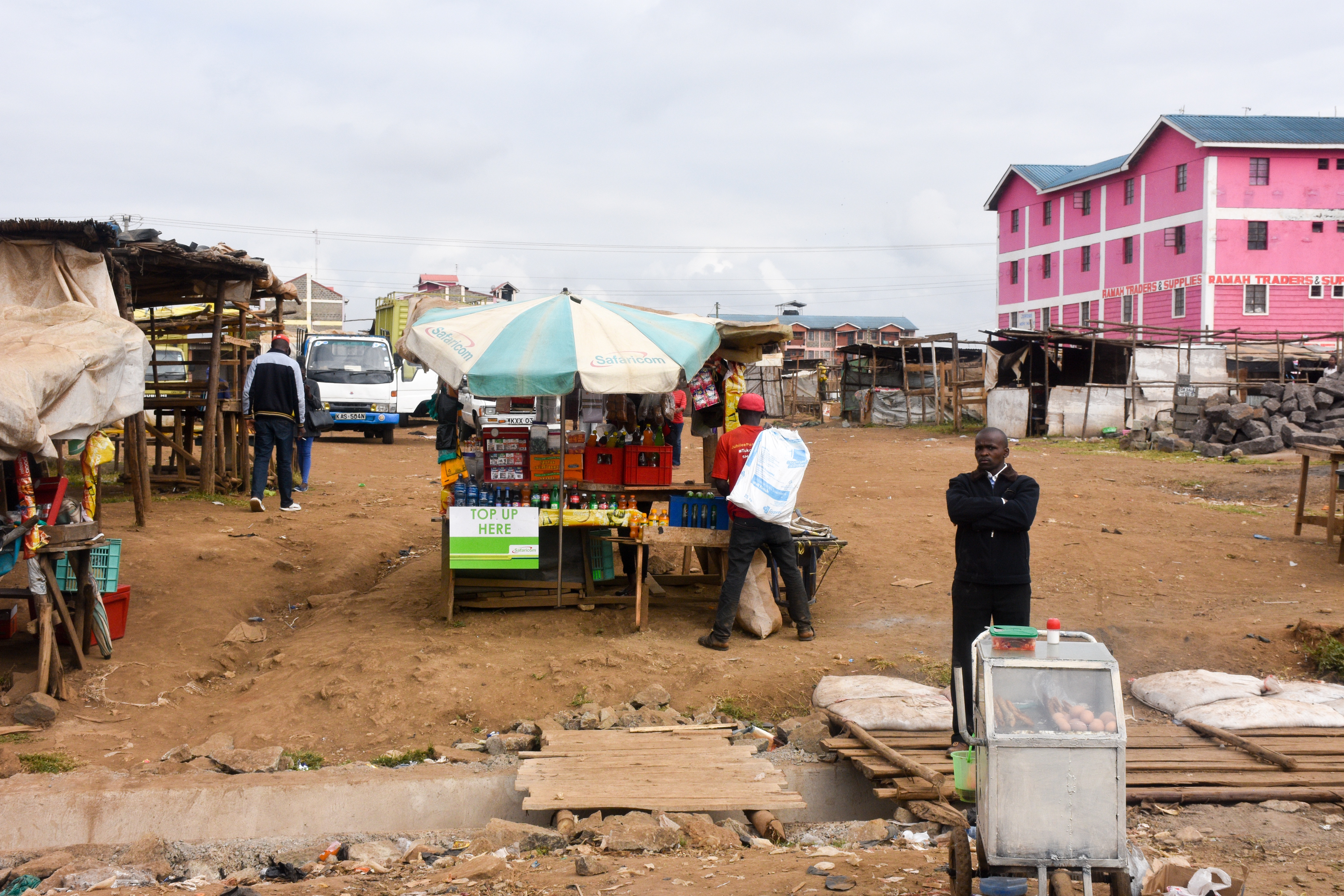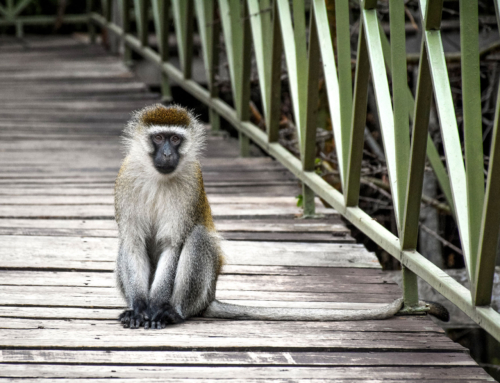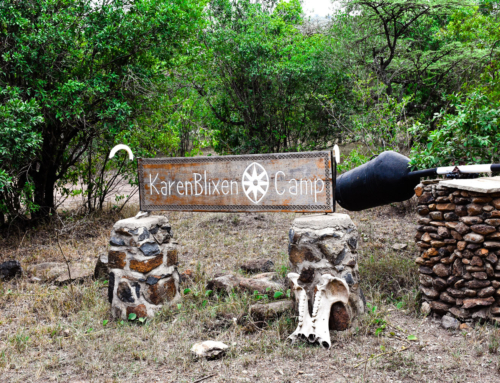Today we drove from Nairobi to Ol Pejeta Conservancy, which is a 4-hour drive. This gave me time to watch what the local culture is like and get to know our guide and our driver more. We stopped at a few locations to look at the local art and gift shops, but the real culture was seen out on the streets while we were driving. One of the things I noticed that surprised me is that no matter what area we were in, people were pretty well-dressed. In some areas there is garbage (English term: rubbish) scattered everywhere on the ground and buildings that would be determined condemned in the United States but men have suits on as well as nice jeans and shirts, and nearly every woman was wearing nice dresses and dress shoes. The one exception to this was the children. The majority of the children were wearing dirty clothing that often looked a couple sizes too small. When we would stop a child or two would visit the side of our vehicle with their hand out for some money.
Our guide stated that the homeless problem used to be really high in Nairobi, but it has gone down significantly in recent years, especially with the children. There is a project that helped to provide vouchers to be handed out to those in need to give them a warm bed to sleep in, a hot meal, clothing, a shower, etc. You could go into any gas station or some other local businesses and purchase the vouchers and then could hand them out when you saw that somebody was in need. This was beneficial to the homeless population because it ensured that they were getting what they needed instead of using money for things to get high or drunk. Our guide, who has lived in Nairobi for 30 years, explained that there are children who are 16 years old and frequent the pubs even though the legal drinking age is higher. Greed on the part of the business owners contributed a lot to the drug/alcohol issues in the area. Before the voucher system, children were given money, but wanted to use the money to sniff glue. They would go to commercial shops, like a tire shop, and pay for the strong stuff. The glue would cause ulcers near their nose and eyes and so it was visible who was sniffing.
Our guide, Simon, is originally from the United Kingdom but moved to Nairobi about 30 years ago. When I asked him why he left the advertising industry to do wildlife tours he told me, “Risk and adventure.” He wanted an exciting life and this was how he found it. He is a very personable man and is fun to be around. He even brought some sweets for the girls for our drive today. Simon is extremely knowledgeable of the area and of the animals so we got a ton of information about the history of the area as well as fun facts about all the animals that we saw along the drive today.
Our driver, Henry, has always lived in Kenya and has two children ages 15 and 19. He has been doing safari drives for 13 years. Henry told the girls that he was going to be their teacher during our time with him and they would need to “complete their homework” and show it to him so he could check it off. Their homework was to write down all animals that they saw. I was pleasantly surprised by Henry’s willingness to teach the girls while we were out and was happy that it would give me a bit of a break while we were on safari drives.






Leave A Comment